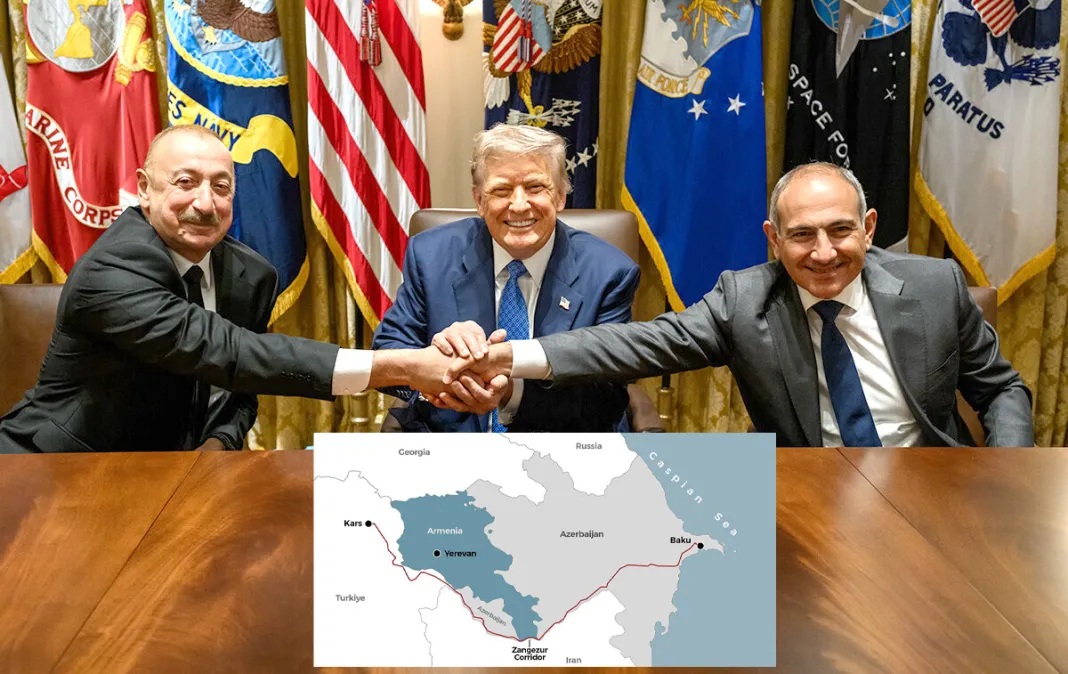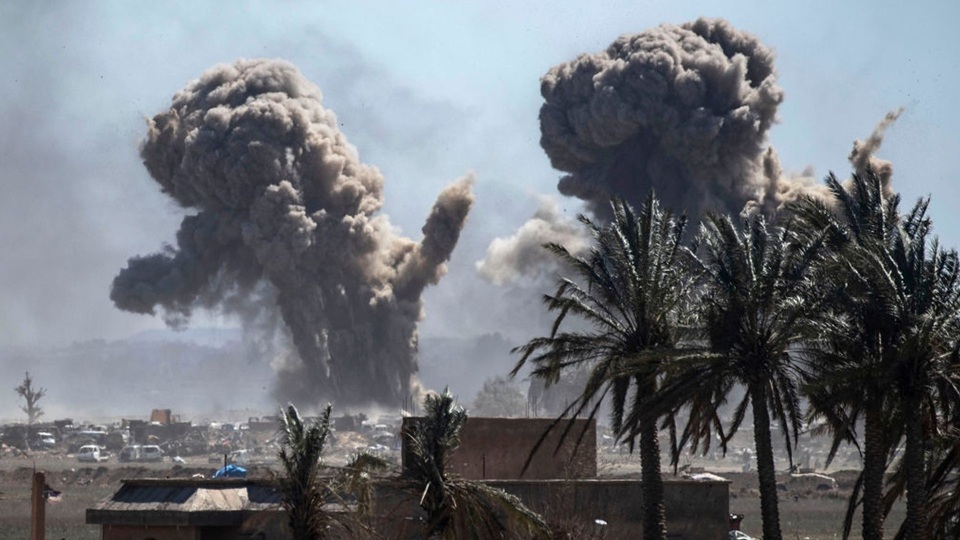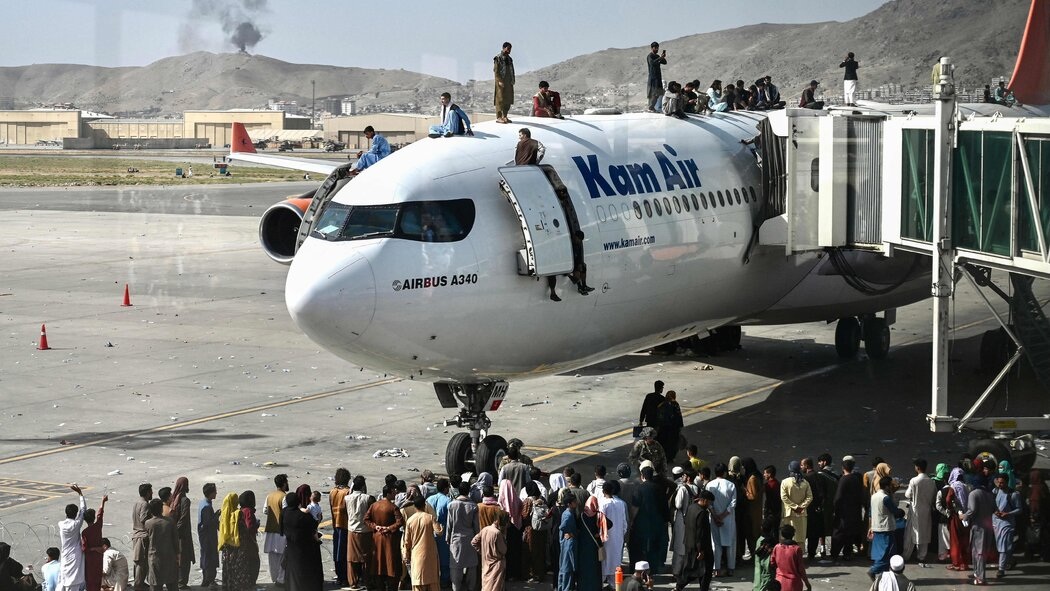
There was a celebratory mood at the White House on August 8, as U.S. President Donald J. Trump hosted the President of the Republic of Azerbaijan, Ilham Aliyev, and the Prime Minister of Armenia, Nikol Pashinyan. The signing of the Washington Agreements was hailed by all three leaders as historic and presented as a potential end to the decades-long territorial conflict between Armenia and Azerbaijan, recognizing the territorial integrity of each country and the inviolability of the borders. In addition, a resolution was reached on one of the most complex issues in recent Armenia-Azerbaijan peace talks: the key transportation corridor connecting mainland Azerbaijan with its Nakhchivan exclave through southern Armenia. Are the agreements enough to bring lasting peace to the South Caucasus?
By Vasif Huseynov
While these agreements have the potential to close a long-standing chapter of the conflict and create opportunities for peace, stability, and security in the region, a range of threats and challenges could still undermine the implementation of these agreements and derail the process, with overarching implications for the regional security.
What Armenia and Azerbaijan agreed upon in Washington
The Washington summit held particular importance for the two South Caucasus countries for several reasons. Before their trilateral meeting with the U.S. President, the Armenian and Azerbaijani leaders held separate bilateral talks with the United States, signing agreements on a range of strategic issues.
For Baku, a key outcome was the agreement with Washington to establish a Strategic Working Group tasked with preparing a Charter on Strategic Partnership between the Republic of Azerbaijan and the United States of America. This document is expected to elevate bilateral relations to a higher level and open new opportunities for cooperation in priority sectors such as energy, connectivity, and artificial intelligence.
The two sides also agreed to annul the 907th Amendment to the Freedom Support Act (1992), adopted under the influence of Armenian lobby groups, which prohibited direct U.S. aid to Azerbaijan as long as Azerbaijan maintained its “blockade” of Armenia. However, it was Azerbaijan that was subject to the aggression of Armenia in the early 1990s.
Similarly, Armenia signed bilateral agreements with the U.S. to deepen cooperation in the same priority sectors – energy, connectivity, and artificial intelligence. However, Yerevan currently holds a slight advantage over Baku in terms of formal bilateral arrangements with Washington. In the final days of the Biden administration, whose leadership openly adopted a pro-Armenian stance on South Caucasus issues, Armenia signed its own Charter on Strategic Partnership with the United States.
Unlike the Biden administration, Trump holds a more neutral and unbiased stance in the relations between the two countries and seeks to pursue the relations at an equal pace. This is primarily affected by the fact that the US geopolitical designs concerning the South Caucasus cannot be implemented without the involvement of Azerbaijan, which the late American statesman Zbigniew Brzezinski once described as “the cork in the bottle containing the riches of the Caspian Sea Basin and Central Asia”.
Without a doubt, the most consequential outcome of the Washington summit was the set of agreements reached between Armenia and Azerbaijan. The two countries initialed their long-awaited peace treaty, intended to bring a definitive end to their decades-long conflict. Azerbaijan first proposed the founding principles of the treaty in March 2022, and the two sides spent three years negotiating its provisions, finalizing the text in March of this year.
However, initialing the treaty does not mean it has been formally signed. Armenia is expected to amend its constitution to remove territorial claims against Azerbaijan before the treaty can be concluded. This process is likely to take at least a year, as Armenia must first hold parliamentary elections.
In Washington, Armenia and Azerbaijan also jointly called for the dissolution of the OSCE Minsk Group – the mediation format established in the early 1990s to address their conflict. The decision to disband this body removed yet another obstacle on the path toward signing the peace treaty.
However, perhaps the most debated agreement reached in Washington was the one concerning the transportation link between mainland Azerbaijan and its Nakhchivan exclave – until recently known as the Zangezur corridor. First proposed in the Russia–Armenia–Azerbaijan trilateral statement signed after the Second Karabakh War in 2020, the corridor was initially intended to provide unimpeded passage between the two parts of Azerbaijan and to be operated under the control of Russia’s Federal Security Service (FSB) Border Guards.
For Moscow, this arrangement carried immense geopolitical significance, as it would have cemented Russia’s presence in the region and placed it in a pivotal position to oversee transport links not only between Azerbaijan and Turkey, but also between Europe, Central Asia, and China. Since 2020, Russia has consistently emphasized the trilateral statement as the indispensable foundation for any agreement on the Zangezur corridor.
Today, however, the reality looks very different. The corridor will open, but the trilateral statement has virtually vanished from public discourse. Moreover, it will now bear the name of the U.S. President – officially designated the Trump Route for International Peace and Prosperity (TRIPP) – and will be placed under U.S. control for at least 99 years.
The specific arrangements for the route, including its operational modalities and security provisions, remain to be negotiated and are likely to remain confidential until the final agreement is reached. What is clear, however, is that the third-party guarantor of its security and oversight will be the United States, not Russia, as initially envisaged.
The implementation of these agreements – particularly the one on the Trump Route – will fundamentally reshape relations between Armenia and Azerbaijan. In addition, the geopolitical landscape of the South Caucasus is noteworthy.
In an ideal scenario, this would create a favorable environment for lasting peace between the two countries, open avenues for regional economic integration, and strengthen economic ties both within the South Caucasus and with the broader region stretching from Central Asia to Europe.
Moreover, under the TRIPP project, the United States would serve as the guarantor of these agreements, helping to prevent the “divide and rule” strategies of other powers. Yet, despite these promising prospects, a range of challenges could hinder or complicate the implementation of the Washington agreements.
An uncertain future for the South Caucasus
The challenges to implementing the Washington agreements stem from both local and geopolitical factors. At the regional level, they are closely tied to Armenia’s domestic political situation.
The signing of the peace treaty depends on a constitutional amendment in Armenia, a process likely to be complicated by the fateful parliamentary elections scheduled for June 2026. Russia-backed opposition parties, clerical circles, and diaspora groups fiercely oppose the Western-backed peace agenda, portraying it as a capitulation.
Prime Minister Pashinyan’s government will need to mount an effective election campaign to overcome these forces – an uphill task given his low approval ratings. The standoff between the government and opposition could turn violent, particularly if externally supported elements intervene. A Pashinyan defeat and the rise of a pro-Russian political group would likely derail the Washington agreements, especially the Trump Route and the constitutional amendment.
However, it is reasonable to expect that many Armenians, weary of the long-standing conflict, will reject the appeals of radical forces advocating hostility toward neighbors over peace and reconciliation. The choices the people of Armenia make in the coming year will therefore be decisive for the smooth implementation of the peace agenda.
On the geopolitical front, the process faces further headwinds. While Turkey and Georgia – the South Caucasus’ immediate neighbors – along with the European Union and nearly all other countries worldwide, have welcomed the Washington agreements, two critical players have not: Russia and Iran. Both have traditionally opposed Western involvement in South Caucasus affairs, promoting instead the formula of “regional solutions to regional problems.” The events in Washington on 8 August went well beyond the red lines they have implicitly drawn in the region.
In a telephone call with his Armenian counterpart, Iranian Foreign Minister Abbas Araghchi warned against any geopolitical changes in the South Caucasus resulting from the Washington agreements. While President Ebrahim Raisi’s administration maintained a cautious official tone, radical circles in Iran did not mince words, openly threatening the countries involved in the Trump Route with military action.
“This passage will not become a gateway for Trump’s mercenaries — it will become their graveyard,” declared Ali Akbar Velayati, senior advisor to the Supreme Leader. Ali Bagheri-Kani, a member of the Foreign Ministry’s Strategic Council, told state television that Iran would respond “regardless of whether Russia participated or not.” Meanwhile, Iranian state-controlled media denounced the corridor agreement as an act of betrayal and urged the government to take countermeasures.
Iran is unlikely to be able to stop it on its own without Russia’s involvement. In a similar vein to Iran’s reaction, Russian media, along with political and expert circles, characterized the corridor deal as a “betrayal” and a “stab in the back.”
While the official response was more measured, calling for respect for the interests and concerns of neighboring countries, semi-official groups urged the government to take all possible measures to prevent what they described as the United States’ “encroachment” into Russia’s “sphere of influence.”
This situation poses serious risks to peace and security in the South Caucasus. Disrupting the regional balance of power and antagonizing Russia and Iran could jeopardize the sustainable implementation of the agreements reached at the White House. Both Armenia and Azerbaijan are aware of these dangers. In particular, the government of Armenia, on whose territory the Trump corridor will operate, has reached out to both Tehran and Moscow, seeking to assure them that the opening of the Trump Corridor will not threaten their interests.
Yerevan has previously rejected Russia’s involvement in the corridor, arguing that the trilateral statement of November 2020 has lost its relevance. This stance, coupled with Armenia’s broader drift toward the West under Prime Minister Pashinyan, stands in apparent contradiction to the country’s commitments within the Russia-led Collective Security Treaty Organization (CSTO) and Eurasian Economic Union (EAEU).
As a result, the verbal assurances offered by the Armenian government to Iran and Russia are unlikely to assuage their concerns or resentment fully. Nevertheless, they at least indicate that these concerns are not being ignored. Such diplomatic outreach is essential; without it, the Washington agreements could precipitate a greater security crisis in the South Caucasus instead of ending regional conflicts and fostering lasting peace.
That said, the Washington agreements mark a significant step toward resolving the decades-long conflict between Armenia and Azerbaijan, addressing both the peace treaty and the establishment of the Trump Route connecting mainland Azerbaijan with Nakhchivan. While welcomed by many regional and global actors, the agreements face considerable obstacles.
Domestically, Armenia’s constitutional amendment process and the upcoming 2026 parliamentary elections create uncertainty, with strong opposition from pro-Russian political forces, clerical circles, and parts of the diaspora.
Geopolitically, Russia and Iran view the agreements – particularly U.S. oversight of the corridor – as a challenge to their influence in the South Caucasus, prompting harsh rhetoric and threats. Armenia has sought to reassure both powers, but its pivot toward the West and rejection of Russian involvement have created deep distrust and sparked tensions.
Whether the Washington Agreements bring lasting peace or trigger new instability will depend on how these local and geopolitical challenges unfold in the coming years.






